Fig
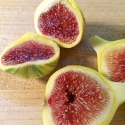
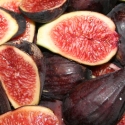
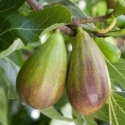
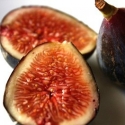
READ MORE
READ LESS
PAGE 1 2 ALL aka Fig Edible This fruiting fig is highly ornamental as well as productive. Large glossy green foliage and a vigorous growth habit with large fruit that are purplish brown with pink flesh and a rich flavour. Ripe in Jan - Feb. A favourite fig for jam and preserving. Likes the sun and protection from harsh frost. Deciduous. Fig Brown Turkey Current Stock Height: 160/180 cm ? Container: pb18 ? $66.99 aka Fig Edible A highly ornamental tree that has the added bonus of providing delicious fruit twice throughout the year in January and April. The fruit is purple-black with a succulent red flesh. Plant in a sunny well drained position with protection from harsh frost. Deciduous. Fig Brunoro Black Expected Stock Height: 130/150 cm ? New stock expected Beginning of July, 2026. Waitlist now. Estimated price TBA. Payment on order.
aka Fig Edible This Fig has large pear-shaped fruit with greenish-brown skin and quite coarse (but delicious) golden brown sweet flesh. Brunswick is more tolerant and hardy than many Figs but will still be happiest in a sunny well drained spot with protection from frost. Crops in Summer and again in Autumn Deciduous.
Fig Brunswick Current Stock Height: 40/70 cm ? Container: pb18 ? $66.99 aka Fig Edible This Adriatic type Fig is a heavy producer of medium sized, bell shaped, green/yellow skinned fruit with gorgeous red flesh that is rich and sugary. The tree forms into a round topped spreading tree with deep green lobed leaves. Self pollinating. Harvest in April when fruit starts to fall. Deciduous Fig Candy Expected Stock Height: 20/30 cm ? Currently sold out. New season fruit-and-nut trees available next winter. Add to your waitlist to be advised when next in stock. aka Fig Edible The delectable and desirable fruit of the Fig is full of calcium, iron, and Vitamins. This highly ornamental tree produces medium sized fruit with green skin and red sweet flesh. Will crop best if grown in a warm sheltered spot. Harvest fruit in summer and again in autumn. Deciduous. Fig French Sugar Expected Stock Height: 110/120 cm ? Currently sold out. New season fruit-and-nut trees available next winter. Add to your waitlist to be advised when next in stock. Fig French Sugar Expected Stock Height: 110/150 cm ? Currently sold out. New season fruit-and-nut trees available next winter. Add to your waitlist to be advised when next in stock. aka Fig Edible This fruiting fig is highly ornamental as well as productive. Large glossy green foliage and a vigorous growth habit with large fruit that are purplish brown with pink flesh and a rich flavour. Delicious eaten straight from the tree. Ripe in Jan - Feb. Deciduous.
Fig Malta Current Stock Height: 25/35 ? Container: 3l ? $29.99 aka Fig Edible Invite Mrs Williams into your garden and you will have a very attractive tree that has the bonus of 2 crops of large fruit per year in January and April. The fruit has green/yellow neck and brown/purple base with red flesh and delicious. Main crop April. Deciduous. Fig Mrs Williams Expected Stock Height: 140/160 cm ? New stock expected Beginning of July, 2026. Waitlist now. Estimated price TBA. Payment on order.
aka Tiger Fig With the striking fruit striped green and yellow is it any wonder this fig is known as the 'Tiger Fig'. Highly ornamental and delicious eating. Needs a really warm position and protection from frost to do well. Fruit matures late in April. Deciduous. Fig Panache Current Stock Height: 140/160 cm ? Container: pb18 ? $66.99 aka Fig Edible Well the name tells you that this Fig crops well with green skinned fruit that turn purple when ripe. The flesh is sweet and juicy with a creamy texture. Large lush ornamental foliage. Plant in a warm sheltered position with good drainage and protection from harsh frost. Deciduous. Fig Prestons Prolific Current Stock Height: 50/70 cm ? Container: 3.3l ? $32.99 aka Fig Edible The ancient and revered fig is an attractive garden tree as well as producing delectable, delicious fruit. 'Robyn' is full of vitamins and minerals and is recommended for fresh eating. The fruit ripens in summer. Plant in well drained soil in the sun. Deciduous. Fig Robyn Expected Stock Height: 50/70 cm ? Currently sold out. New season fruit-and-nut trees available next winter. Add to your waitlist to be advised when next in stock.
Leaves: Deciduous, Green
Mature Size 7-10 yrs (HxW): 5m x 4m
Leaves: Deciduous, Green
Mature Size 7-10 yrs (HxW): 5m x 4m
Leaves: Deciduous, Green
Mature Size 7-10 yrs (HxW): 5m x 4m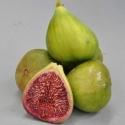
Leaves: Deciduous
Mature Size 7-10 yrs (HxW): 3m x 5m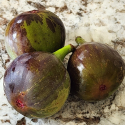
It is important not to let your Fig tree dry out completely in summer as this will affect the fruit. Pick your figs towards the end of summer (when the fruit bends at the neck) and leave 2 to 3 days to soften before eating. This variety will store well in the fridge.
Leaves: Deciduous, Green
Mature Size 7-10 yrs (HxW): 5m x 4m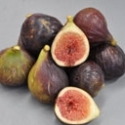
A favourite fig for jam and preserving. Likes the sun and protection from harsh frost.
Leaves: Deciduous, Green
Mature Size 7-10 yrs (HxW): 5m x 4m
Plant in a sunny well drained position with protection from harsh frost.
Leaves: Deciduous, Green
Mature Size 7-10 yrs (HxW): 5m x 4m
Leaves: Deciduous, Green
Mature Size 7-10 yrs (HxW): 5m x 4m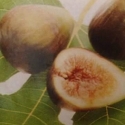
Leaves: Deciduous, Green
Mature Size 7-10 yrs (HxW): 5m x 4m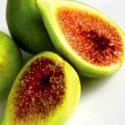
Leaves: Deciduous, Green
Mature Size 7-10 yrs (HxW): 5m x 4m
HL Nurseries Limited t/a Wairere Nursery
826 Gordonton Road, R D 1, Hamilton 3281 Ph: (07) 824 3430 Email: